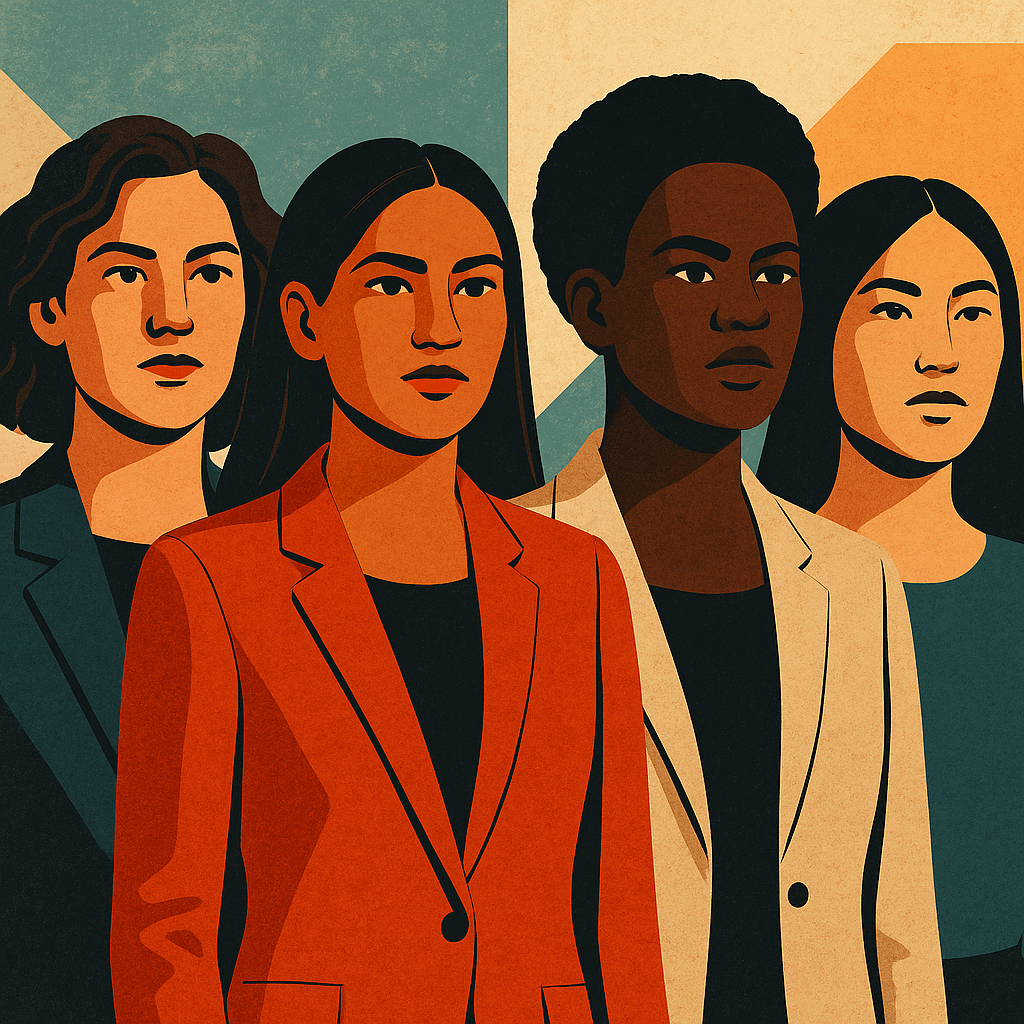A Historic Moment for Mongolia
In the 2024 parliamentary election in Mongolia, a constitutional amendment increased the number of Members of Parliament to 126, introduced a mixed electoral system, and required candidate lists to alternate by gender. This was a historic milestone. As a result, a record 32 women were elected to the 9th Parliament, making up 25.4% of all members. This brought Mongolia closer to the global average and made it one of the leaders in Asia for women’s political representation. I still remember when there were only 8 women in Parliament between 1996–2000, 9 between 2004–2008, and just 3 from 2008–2012 — all out of a total of 76 seats. Looking at how far we’ve come, I feel hopeful and proud.
True Democracy Includes Women
In a democracy, every citizen should have the right to vote, run for office, and help shape their country — regardless of gender, ethnicity, or background. When women’s rights to participate are limited, whether directly or indirectly, democracy is weakened. Many studies show that increasing women’s participation leads to better decision-making, more inclusive policies, and stronger outcomes for everyone.
Author and journalist Julia Boorstin, in her book When Women Lead, shares how women in leadership roles tend to lead differently — with empathy, collaboration, and purpose. She writes that when women make up at least 30% of a leadership group, it creates a powerful cultural shift. Women feel safer, more confident to speak up, and less burdened by stereotypes. This collective empowerment becomes what she calls a “social vaccine” against bias.
Women Lead With Empathy and Vision
Boorstin found that women leaders often take a big-picture approach. They consider the broader context, invite diverse voices into conversations, and focus on long-term solutions rather than quick wins. Their leadership style strengthens not just businesses, but entire communities. Teams with more women are shown to perform better in areas like communication, innovation, and problem-solving — all essential for thriving in a fast-changing world.
One inspiring example of this kind of leadership is Jane Jacobs, a writer and activist who changed how we think about cities.
Jane Jacobs: Champion of Community-Centered Cities
Jane Jacobs wasn’t a trained urban planner, but her ideas revolutionized city design. At a time when most city planning was led by men who prioritized highways and large-scale development, Jacobs pushed for something different — cities built for people, not just cars or concrete. She believed that neighborhoods should be walkable, lively, and safe. She valued things like corner stores, casual sidewalk chats, and spaces where kids could play freely. Her work was deeply community-based and quietly feminist. She listened to mothers, shopkeepers, and everyday people — those often ignored in city planning. One of her most famous actions was helping stop the construction of the Lower Manhattan Expressway, which would have destroyed vibrant neighborhoods in New York. Instead of relying on powerful titles, Jacobs organized local people and showed that grassroots voices could reshape the future. Today, her legacy lives on in the work of feminist urbanists who ask: Who gets to belong in a city? Whose needs are reflected in its design? When we include women and marginalized groups in these conversations, cities become more just, more inclusive, and more functional for everyone.
When Women Lead, Communities Thrive
The idea that women bring unique strengths to leadership was powerfully proven during the COVID-19 pandemic. Journalist Nicholas Kristof found that countries led by women — like New Zealand, Germany, Taiwan, and Norway — had far lower death rates. What set these leaders apart? They listened to experts, acted early, and communicated clearly and compassionately. Their leadership saved lives. These qualities — inclusion, care, humility — are too often overlooked in traditional politics. But history tells us they work. In the early 20th century, after American women won the right to vote, states began investing more in public health and sanitation. Thousands of children’s lives were saved each year. Women leaders have long prioritized issues that benefit the whole community — and the impact is lasting.
Gender Equality Is Smart Economics
Beyond politics and health, women’s leadership drives real economic growth. Today, women make up half the world’s population, but hold only 26.5% of parliamentary seats and 22.9% of ministerial roles. This imbalance isn’t just unfair — it’s holding us back. Studies show that a 10% increase in women’s representation in Parliament leads to a 0.7% increase in GDP growth. That’s a big deal. Why? Because women in leadership are more likely to support policies that help working families — like paid parental leave, wage transparency, and affordable childcare. These aren’t just “women’s issues.” They help everyone, increase workforce participation, and make our economies stronger. Countries like Iceland, Rwanda, and Canada are leading the way. Their policies don’t just close gender gaps — they create healthier, more resilient societies. The message is clear: when women lead, everyone benefits.
Closing the Gap Starts With Us
Right now, we are still 169 years away from reaching full gender equality in politics. That number should shock us. But it should also motivate us. We can change this — by supporting women leaders, removing barriers to political participation, and demanding equal representation. Because the truth is simple: where women are, communities grow. When women have a seat at the table, decisions are wiser, more compassionate, and more connected to real life. And when more voices are heard, democracy becomes stronger for everyone.

